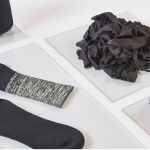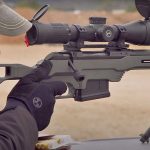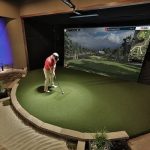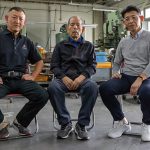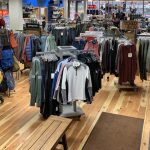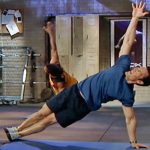The attitude at adidas-Salomon management over the last year has gone from aggressive prognostications and bluster to a sense of a quiet confidence that they are indeed finally headed in the right direction to once again bring the adidas brand back into growth mode. At the companys fifth annual investor day held last week in Herzogenaurach, adidas-Salomon management reviewed the status of the adidas, Salomon, and TaylorMade-adidas Golf businesses for 2004 and outlined their vision for the future.
Chairman and CEO Herbert Hainer stressed in his opening remarks that the company had spent an “enormous amount of energy” over the last few years strengthening their brands and optimizing their financial position. He also said they were now positioned to move to the next level of performance and profitability.
Hainer said he saw adidas-Salomon as a leaner, more responsive company. As an example, the COB/CEO said that not long ago the company had two separate sourcing teams, one for global and one for the U.S. business. There is now one unit. He said the weaknesses are now gone and he sees more teamwork within the company, stressing what each brand can learn form the other.
Hainer pointed to the combination of TaylorMade and adidas-Golf, stating that adidas Golf had “nearly doubled” sales since they merged operations. Rolling adidas cycling under Mavic was also cited as a win for the company.
Mr. Hainer said that improvement in fee cash flow was a key driver for the company. Net operating working capital has improved ten full points over the last three years to 28%. The financial leverage of the company also improved, a number that stood at 350% after the Salomon and TaylorMade acquisitions. That stat now stands at less than 70% and is targeted to get to less than 50%.
Owned-retail is expected to reach 10% of the business in 2005 and will exceed that planned percentage shortly thereafter. Hainer did not want to raise expectations here and did not want a number to run the business. He said they dont want to make mistakes.
He said they will not be acquiring any retail companies, and will instead continue to focus on building their own stores.
There is little time at Brand adidas to look back at the past year and the successes seen at the Euro 2004 championships and the Summer Olympics in Athens.
Management is already looking ahead to 2006 when they will be the sponsor of the World Cup to be held on their home turf in Germany. Hainer said the company already had 100 employees working on the event.
Erich Stamminger, CEO of adidas America and head of Global Marketing, said that Performance product was the “heart of adidas”, accounting for nearly 80% of revenue. He aid that adidas had “more new product and contracts” than any other brand in 2004.
Key products for the year included the adidas 1 running shoe. adidas produced just 25,000 pairs of the $250 shoes that were sold exclusively through the brands Sports Performance stores and “a few retailers” worldwide. He also pointed to the new T-Mac 4, which is billed as the first basketball shoe without laces. The shoe has an entry system not unlike a ski boot.
In Football (Soccer), Stamminger highlighted the success of the Predator, which has sold more than six million pairs. He said the sales goal was set at 850 million for the year, a number they said they would surpass 900 million this year.
“Our goal for 2006 when the World Cup comes to our home market Germany is to break the 1 billion barrier in football sales,” Stamminger said. He said they need to defend their number one position in Soccer share.
adidas, which still claims the top spot in Soccer in the world, sees the Nike share of the Soccer business aided by non-performance product sales. While Nike has been busy wrapping up clubs in Europe, adidas got into their hen house in the U.S., announcing last a ten-year, $150 million deal to sponsor Major League Soccer. adidas becomes MLSs official athletic sponsor and licensed product supplier. They will have the brand on every MLS team as the league phases out of current deals at the end of 2004. The deal also gives adidas the exclusive U.S. English language broadcast rights of the 2006 World Cup, effectively shutting out Nike advertising from the telecasts.
Stamminger also said the adidas brand was number one in Tennis.
adidas plans 10 to 15 Sport Performance owned-retail stores over the next months in major cities around the world.
In addition to its Sport Performance roots, adidas has segmented the brand into Sport Heritage and Sport Style product lines.
The Sport Heritage category, which includes many of the companys retro favorites as well as some new initiatives such as the Missy Elliott and Muhammad Ali programs, is now broken into three sub-segments; Metropolitan, Urban, and Coastal, which will be centered on Skateboard product. The category is expected to grow at double-digit rates for the “foreseeable future”.
adidas plans to accelerate the rollout of Sport Heritage owned-retail, planning to open another 12 to 15 stores in 2005 after opening nine stores in 2004. The company expects to have 10 to 15 Sport Heritage stores in the U.S. by 2007.
In the Sport Style segment, the new Y-3 product line is already breakeven.
Hainer said that Brand adidas had its biggest opportunity in Asia, while North America will need to be pushed a bit, and Europe continues to be difficult, particularly in Germany. He said that the Asia business “more or less doubled” in the last few years.
Hainer sees growth in North America in the mid- to high-single digits in 2005, growth that should reach double-digits in 2006 and beyond.
Stamminger said that North America growth is now expected to be in the 3% to 5% range for this year.
In Europe, all seven areas were said to be growing, with the fastest growth coming out of the Emerging Markets area with double-digit rates. In Western Europe, France saw the strongest growth.
Roland Auschel, Head of adidas Region Europe, said that Football (Soccer) and Lifestyle product are expected to drive consumer demand. He said that adidas is taking share from both small and large competitors on a flat market. Football is elevating status of the brand in Europe.
Auschel said consumers are making more point-of-sale decisions at retail, stating that 55% of consumers are now making last minute decisions. He said that price sensitivity was going up, adding that Kids Apparel was down 10% since 2003 and Adult Apparel was down 8.5% in the last year.
The changing retail landscape in Europe has seen higher inventories impact liquidity of those retailers. Auschel said promotional activity was slowing down in Europe and he saw more retailers protecting their margins. At-once business in the market is now 15% to 20% of sales, double the rate from two years ago.
Twelve key accounts in Europe now represent 45% of the business and are expected to grow to 50% in 2006. Auschel said they were growing key accounts over-proportionally to the market. He said adidas had market share dominance in five of the twelve accounts last year, but now have that position in seven of those accounts. He also indicated that the brand had “clear market dominance” in the Emerging Markets area.
Putting on his North America hat, Erich Stamminger said the only way for Brand adidas can achieve its primary goal is if they are successful in the region. He said that the second quarter momentum will continue through the balance of the year and positive backlog numbers should lead to a strong start to 2005. Stamminger said that they have “gone back to basics” and are setting “clearer, more realistic, achievable goals.” He said they “will not desperately push short-term sales growth at the expense of profits and long-term growth.”
adidas America has removed to whole organizational layers and has combined all brand categories under a single sales director in four regions. They will be responsible for footwear, apparel, and accessories and total account management. Most of the sales director slots have been filled from within the current organization. Stamminger will replace himself in the near future, but no timeline has been set.
It is no surprise — based on the deals signed this year that adidas sees basketball as the most important category for the brand in the U.S. They also pointed to the renewal of their Yankees deal, the expansion of their NCAA all-school deals, the MLS sponsorship, and the acquisition of Valley Apparel that gives them licenses for 140 schools, as a clear indication of their commitment to the Sport Performance category.
adidas will add more shop-in-shop programs as they work to secure real estate at retail and are hiring merchandisers to service that real estate. The need for differentiation at retail has adidas focusing on a Kevin Garnett program at Foot Locker that has seen “very strong” sell through.
The brand is also testing permanent wall space at Foot Locker to support the Sport Heritage category. At The Finish Line, adidas is banking on the a3 Cushion program that had seen double-digit sell through in Mens and high-single-digit liquidation in Womens.
Stamminger said he did not see a risk of reduced margins as they work to increase the Athletic Specialty business. He said that the A/S channel was not necessarily the biggest opportunity, indicating that they their focus on Sporting Goods, Sports Specialty, and Department Stores at the same level.
The company is estimating that they now have a 50% market share in Soccer in the U.S. They also estimate their Basketball share is pegged at 12% excluding the Sport Heritage product. Running share is estimated at 12% of the U.S. market.
Apparel was said to be “performing well” in the U.S., but the main focus for the company is clearly on footwear. Apparel is growing faster in 2004, but is forecast to see growth balanced with footwear going forward.
U.S. stock turns and DSOs were said to be “stronger than the rest of the business.”
The company also featured division presentations from Salomon and TaylorMade-adidas Golf.
Salomon sales were said to be up 400% since 1995 and the Winter/Summer sales ratio was estimated to now be close to 50/50. The division is building more margin by moving more production to Eastern Europe, primarily Romania.
At TM-aG, CEO Mark King sees continued upside as Callaway tries to get its act together. The spring launch of the R7 driver has helped the company grab 25% of the U.S, Metalwood category while ELY continues to lose momentum.



